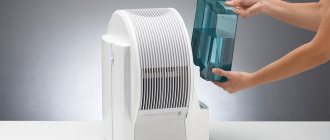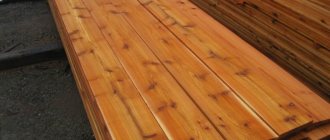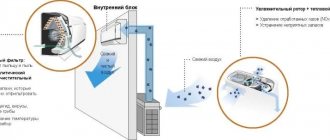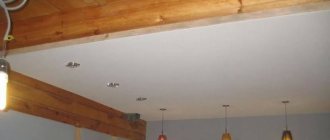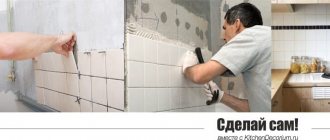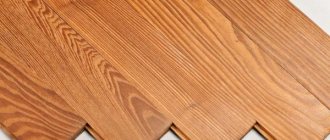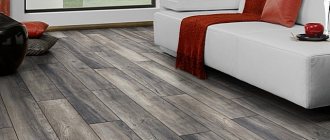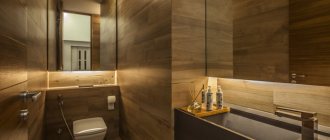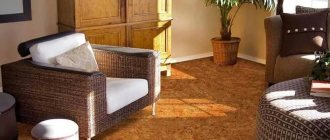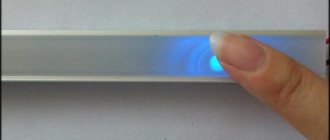Many people associate laminate with comfortable flooring. But few people know that modern latest technologies make it possible to use it for finishing walls and even ceilings.
Today we will talk about using laminate for a kitchen splashback, despite the fact that for a long time this material was considered a low-quality coating and an impractical solution for finishing a kitchen. Let's figure out what it is: a non-standard, but profitable design solution or a promising, but unrealizable idea in practice.
Features of the material
Laminate consists of several layers. The base is wood fiber, which gives the material strength and is the base component for the following layers.
The next component is paper impregnated with a special compound that makes the material moisture resistant. Then comes the decorative layer, which can have a variety of textures. Thanks to it, laminate can imitate wood, parquet, tile, and stone. There are also very exotic options: python or crocodile skin, with bright abstract designs, with 3D images.
The last layer is acrylic resin with special additives. The transparent layer has a protective function and protects the laminate from moisture and abrasion.
Main criteria for quality material:
- Wear resistance class. It must be at least 32, because during operation, a laminate kitchen apron is exposed to moisture, high temperatures and various contaminants, which then need to be removed.
- Environmental Safety. For the kitchen, it is necessary to choose E1 class material, which contains less formaldehyde, which has a negative impact on human health.
- Moisture resistance. Material with a high degree of moisture protection costs a little more. It is not recommended to save money and purchase material with poor protection that will last less time.
Advantages of laminate flooring for the kitchen
This material has many advantages that make it popular when decorating a kitchen. It protects walls well from dirt, grease, and splashes. A laminate kitchen apron is resistant to moisture, steam, and household cleaning products. It has a long service life and will retain its original appearance after many years. Does not deteriorate from regular washing and exposure to sunlight.
Laminate can be found in any hardware store; both regular and artistic materials are available for sale. A variety of shades and textures allows you to match it to any kitchen design.
If you wish, you can make a kitchen apron from laminate with your own hands, since the material can easily be laid on the wall. To decorate a kitchen, you need very little of it, one package is enough, and it is inexpensive when compared with other facing materials.
Rules of care
You want to keep an apron made of laminated material in its original form for a long time. To do this, you should think about caring for it . The following rules apply:
- First of all, it is recommended to ensure that there are no foreign particles, dirt or greasy stains on the surface. Use plain water and quality detergents. Manufacturers always indicate in the instructions what products should be available to care for your laminate flooring.
- Often scratches and minor defects appear on the apron. They are eliminated with special compounds. Olive oil is often used. It is applied to scratches after thoroughly washing the surface.
- Deep damage is repaired using a wax pencil, repair paste, sealant or putty of a suitable color. Acrylic varnish and plaster are also used.
- To avoid damage, avoid using cleaning products that scratch the surface.
Use in the interior of the room
A kitchen apron made of laminate will successfully complement the interior in any style, but in order to choose it correctly, you need to know some nuances. Material imitating wood is ideal for interiors in baroque, classic, empire, and retro styles. Even in a high-tech style it will be appropriate if you choose a certain texture.
For Provence or Country interiors, panels with an aged effect are purchased. Gothic design is dominated by dark shades; a brown or dark red laminate would be suitable here.
This material is popular in modern and minimalist styles. In this case, light shades are selected. Designers advise decorating spacious kitchens with materials with a matte surface, while a glossy finish is suitable for small spaces. It visually expands not only the work area, but the entire space.
The owner decides which laminate to choose for a kitchen backsplash, but it must be remembered that the material must be combined with the design of the room.
Preparatory work
Laying laminate flooring on the wall in the kitchen begins with preparatory work to level the surface. It is necessary to remove dirt and smooth out all defects. The surface is thoroughly cleaned, and existing dents are covered with putty.
For better adhesion of the laminate, lathing is nailed to the surface of the walls. Use reinforced mesh or wooden beams (they must be at least 30 cm apart from each other). The basis for the laminate is a concrete screed, which provides the cladding with strength and reliability. It is mounted on the sheathing, and using a building level, distortions and irregularities are identified. The concrete screed dries within a day, but if the layer is thick enough, you need to wait 48 hours.
Before you start
Installation of the material can be carried out in several ways: on the lathing or using the adhesive method. Regardless of the method chosen, the preparation measures for the material and surface are the same.
Installation tools
- Jigsaw or hand saw.
- Hammer.
- Building level.
- Pencil and ruler.
- Wooden block.
- Electric drill.
- Wooden slats for sheathing. If the glue method is used, then liquid nails.
- Nails, screws.
Installation using the lock method
To make a laminate apron for the kitchen without gluing, it is installed using the locking method. To do this, you need to purchase panels with tongues and grooves. The first row begins to be laid from the top corner.
The tenon of one panel is inserted all the way into the groove of the other at an angle of 45 degrees. The elements are connected until they click, and then hammered. The clutch is of high quality and reliable.
The prepared elements are attached with screws to the sheathing. After laying the first row, they begin the second. They start with a pre-cut element. If adjustment of the panels is necessary, they are tapped with a hammer and a wooden block is placed on them.
To ensure that the apron is securely fastened to the wall, each subsequent row is laid with the panels offset from the previous one. This not only gives strength to the entire structure, but also looks more impressive.
How to make a kitchen apron from laminate using glue?
This is a labor-intensive and complex method, but it is possible to do it yourself. It will take much more time, but it has advantages over the lock method. This method is suitable for any type of wall; it does not require the installation of sheathing.
Glue or sealant is applied to the edges of the panels, then the groove of one element is inserted into the tenon of the other and pressed tightly against each other. Excess glue must be removed immediately with a damp cloth; it must not be allowed to dry on the surface of the panels. First, individual rows of cladding are laid, and then they are sequentially connected to each other.
After two rows are connected, it is necessary to stop work for 2 hours so that the glue completely hardens. Then the installation continues. A break is made after connecting every two subsequent rows. Sometimes small gaps form at the joints; they need to be sealed with a special sealant. The wall covering will be completely ready after 12 hours.
The disadvantage of this method is that it is quite difficult to do high-quality installation with your own hands. This structure cannot be disassembled later. Another disadvantage is that the glue dries out over time, so the coating may collapse.
Chipboard
Installing a wall panel in a kitchen made of chipboard is a little less common than the previous option. There is also laminated chipboard, it is a laminated version of chipboard.
A small drawback of such panels is that they cannot be with drawings or patterns. They are necessarily covered with plastic or film.
Despite the fact that such requirements significantly reduce the design value of the material, it has fairly good characteristics for the kitchen.
Criterias of choice
Reviews about a laminate kitchen apron are good, but before you start creating it, you need to know the basic requirements that professionals place on this coating. It is recommended to pay attention to the following characteristics:
- Facing dimensions. To do this you need to take measurements. Most often, the apron is mounted so that it extends slightly beyond the countertop area. Typically, the height of the cladding does not exceed 85 centimeters.
- Operational life. For the kitchen you need to choose a durable and reliable coating that is not afraid of moisture and high temperature. Laminate is not an environmentally friendly material, but if the technology is followed, it will not cause harm to health. When choosing a material, you must ask the seller for a quality certificate, and if the store is not ready to provide it, then it is better to refuse the purchase. Laminate made in violation of technology will harm your health. The owners of the apartment may experience worsening chronic diseases, asthma or bronchitis.
- Practicality. The surface of the walls near the sink and stove quickly becomes dirty. Therefore, to decorate the apron, choose materials that are easy to wash. Recently, laminate is often used for finishing aprons, because it has excellent performance characteristics and looks attractive.
Most often, the color of the material is matched to the decoration of furniture and walls. This allows you to achieve a neutral transition from the apron to the kitchen set and walls. A sharp transition from the work area to the surface of the furniture is also allowed if a dark-colored set is chosen.
MDF
MDF kitchen wall panels are very popular due to their relatively low price. The material itself has proven itself to be a good raw material for the production of kitchen furniture.
It is dense, which prevents the penetration of moisture, and also has an antiseptic coating, which protects it from various bacteria and fungal spores.
The material itself is wood chips, pressed together with glue under high temperatures. The material gets its characteristics, including water resistance, thanks to additional processing with plastic, so the panels are covered with a protective film, which gives it its characteristics.
In addition to plastic, panels can be covered with paint or PVC film. The second option is less reliable, but you can purchase such a film separately, which allows you to regularly change the appearance of the panels without harming them.
The disadvantage of PVC film is its instability to high temperatures.
